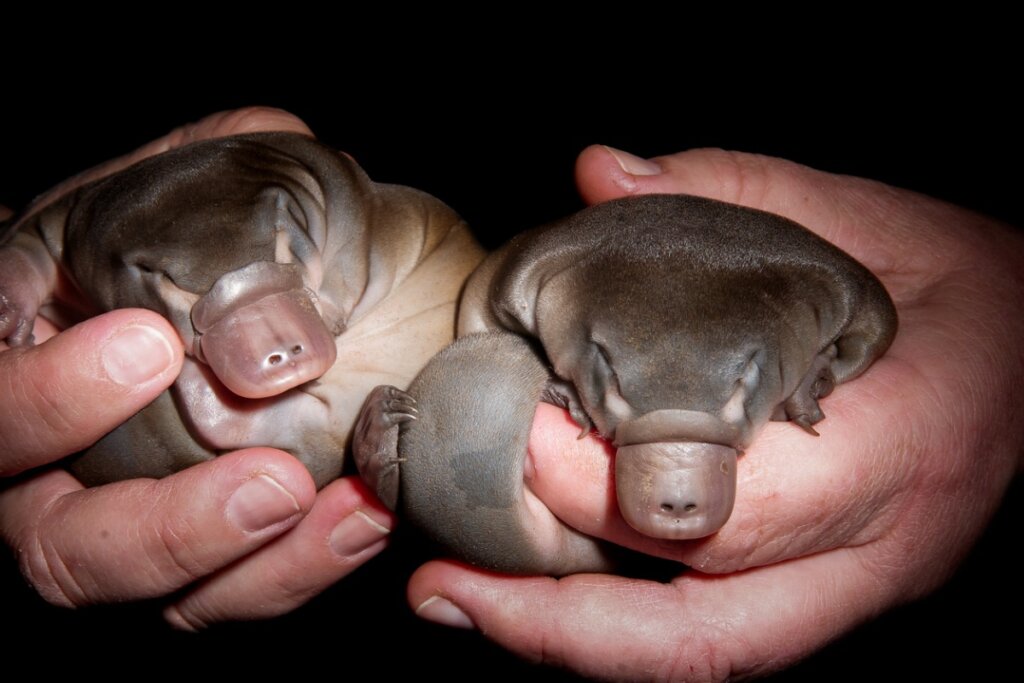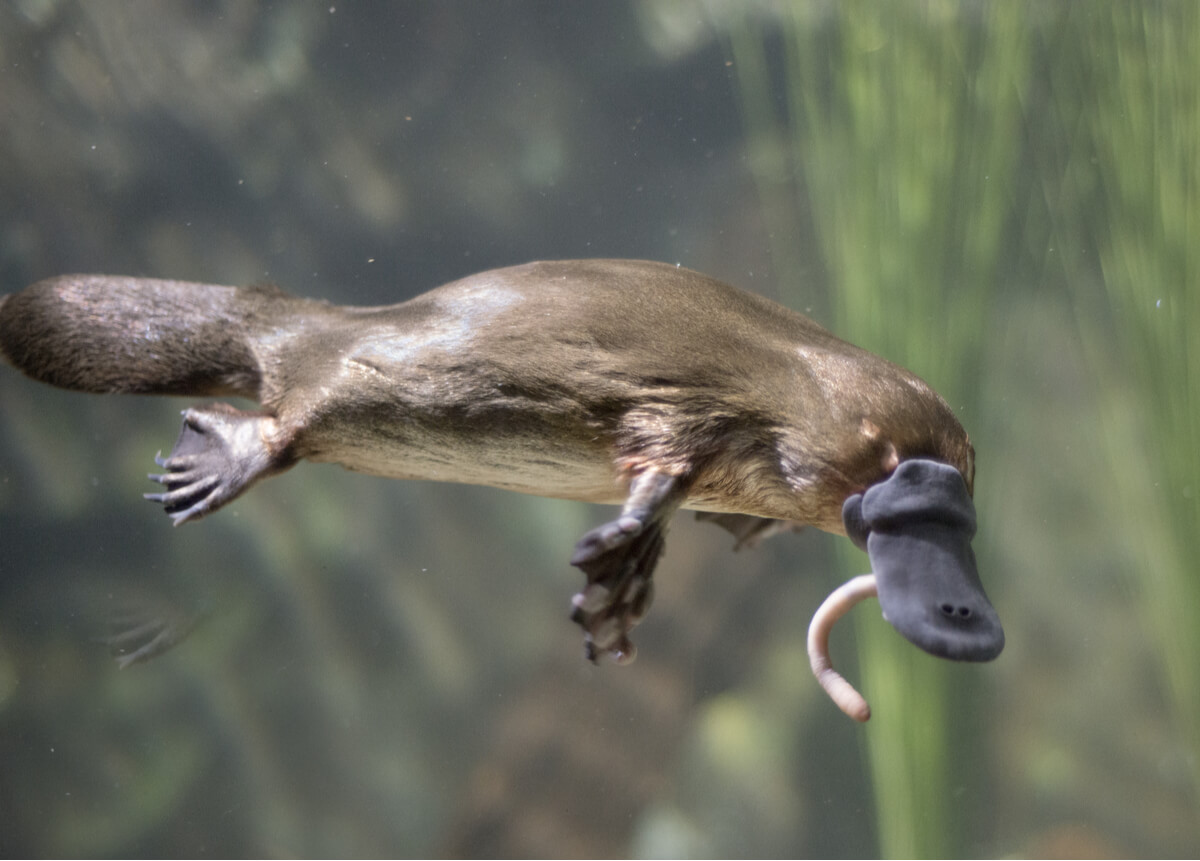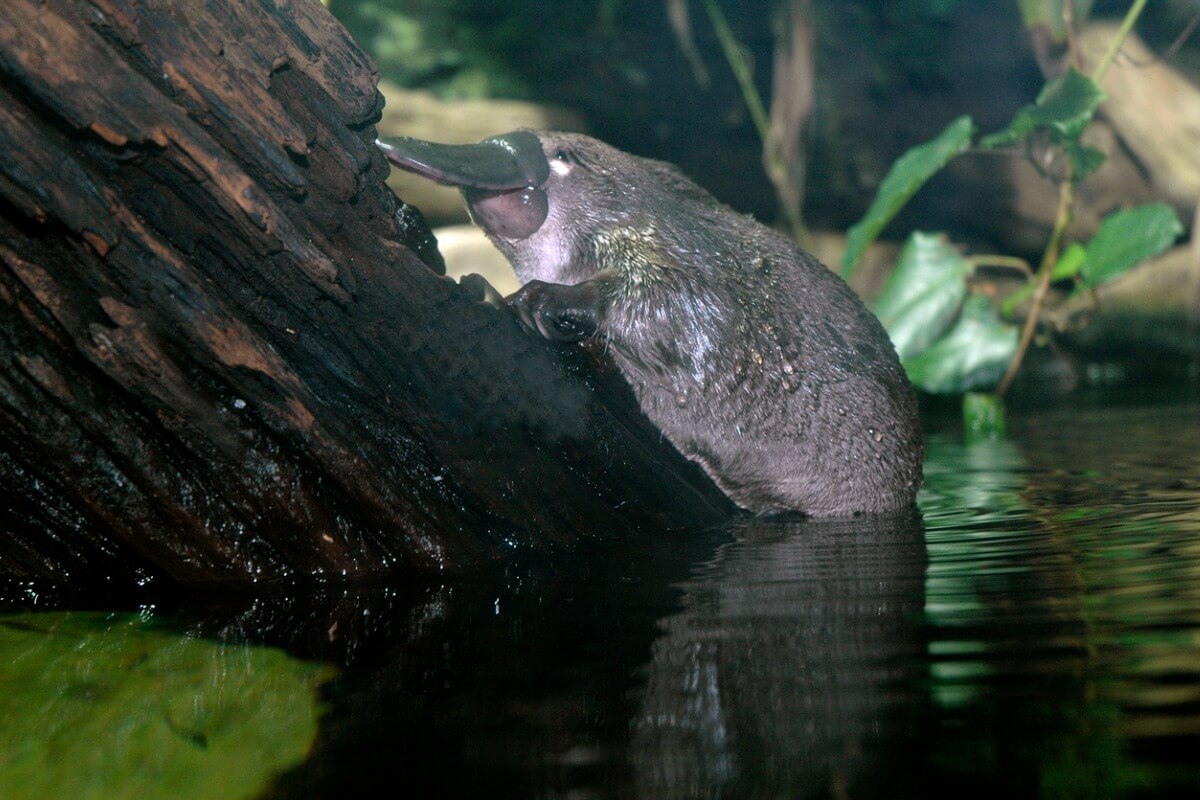Find Out How Platypuses Are Born

Platypuses are renowned for their strange appearance. They look like a real mish-mash of other animals, with their duck-like snout, otter legs, beaver tail, and some reptile-like characteristics. If you don’t know about their biological makeup, then you’ll enjoy finding out how platypuses are born.
These animals – native to Australia and Tasmania – belong to the order Monotremata, as well as 4 other very enigmatic species of mammals. Their scientific name is Ornithorhynchus anatinus and in the following article we’ll tell you all about their reproduction and birth. Don’t miss it!
What do platypuses look like?
A platypus is an amazing animal and looks like a cross between a duck, a beaver, and an otter. This is because of its wide, flat, smooth snout, large tail, and webbed feet. It doesn’t have any teeth, having only keratin plates in its mouth.
The platypus is an excellent swimmer and uses its tail to maneuver and propel itself through the water. In addition, the membranes between its toes also contribute to this ability. However, it can move on land and has strong nails that allow it to dig in the soil.
This mammal has a body covered with fur that protects it from the cold and insulates it in the water. Its color is dark brown, but the ventral region is lighter. Its size is different in females and males, as it’s usually larger and heavier, with an approximate size of 50 centimeters (20 inches). The size of the females is around 43 centimeters (17 inches).
A striking feature of the male platypus is the ability to produce venom, which it injects through the spurs of its legs. This substance can kill small animals, but there’s no need to worry about its effect on humans. Its toxins aren’t lethal, although they can cause considerable pain.

How do platypuses reproduce?
Before going into how platypuses are born, let’s clarify their reproductive characteristics. These animals reproduce sexually by means of eggs, just like the other 4 existing monotremes. This is an interesting aspect, as it’s not found in other mammals.
Platypuses are nocturnal and elusive animals, with little known reproductive behavior in the wild. Most of the observed data come from individuals in captivity.
These monotremes are polygynous, which means that the males mate with several females during the reproductive stage. There’s only one mating cycle per year.
Courtship and copulation
Platypus courtship occurs in water and varies in duration up to 1 month. It involves a “courtship” stage in which the animals don’t have any contact, but the male tries to conquer the female by biting her tail. However, the female will respond with evasive behaviour if she isn’t ready to mate.
Males produce an intense and peculiar odor during this stage. They behave aggressively towards females, harassing and intimidating them in an attempt to make them respond to the encounter.
Females control most of the reproductive process, as they decide when and where it will start, and how long it will last for. In this way, they try to reduce the risk that the male attitude entails.
The evasive behavior patterns of females are varied. Among them, we can highlight the escape, the resistance and the avoidance of males. This keeps them safe from the reproductive insistence of their mates while they aren’t ready for mating.
When the female is ready for copulation, she allows the male to bite her tail and together they perform a dance while circling in the water. Then fertilization occurs, with the male platypus mounting her and inserting his penis into the female’s cloaca.
One of the reproductive curiosities of platypuses is that during the reproductive period males may fight each other for females. In these battles, the competitors use their venomous spurs as weapons.
Gestation or incubation?
After copulation, the female takes charge of building a burrow that will serve as a nesting site. Amazingly, monotremes are the only mammals that don’t give birth to live young, but reproduce by means of eggs.
The gestation period (in the uterus) lasts from 15 to 21 days. After the eggs are laid in the burrow, the female incubates them for another 10 to 11 days.
The burrow is built above sea level, on the banks of rivers or streams. It consists of several narrow tunnels that end in a main incubation chamber. The size of the den is variable and can range from 3 meters (nearly 10 feet) in length to more than 10 meters (nearly 33 feet). The material used for its construction includes wet and dead leaves that the females carry with the help of their tails.
How do platypuses hatch their young?
O. anatinus hatch by means of eggs, which are small, circular in shape, and with an approximate diameter of 11 millimeters. The number of young range from 1 to 3.
These newborn monotremes are quite fragile and defenseless, so they need the mother’s care to survive. In addition, they’re blind, with thin pink skin, hairless, and with teeth (but the teeth are lost during development).
The mother suckles the young with her milk. However, amazingly, it has no nipples. Therefore, food is released through the pores of the skin thanks to specialised glands. Baby platypuses are nourished in this way for approximately 3 or 4 months.
After these months of nursing, the little platypuses have already developed enough to leave the burrow and become independent.

Monotremes are animals with unique characteristics among mammals. In particular, Ornithorhynchus anatinus has an impressive appearance with an equally striking reproductive behavior. The way platypuses are born from eggs, fragile, helpless, hairless, blind, and with teeth is an amazing start to life for an extraordinary animal.
All cited sources were thoroughly reviewed by our team to ensure their quality, reliability, currency, and validity. The bibliography of this article was considered reliable and of academic or scientific accuracy.
- Holland, N., & Jackson, S. (2002). Reproductive behaviour and food consumption associated with the captive breeding of platypus (Ornithorhynchus anatinus). Journal of Zoology, 256, 279-288.
- Serena, M., & Grant, T. (2017). Effect of flow on platypus (Ornithorhynchus anatinus) reproduction and related population processes in the upper Shoalhaven River. Australian Journal of Zoology, 65(2), 130-139.
- Thomas, J., Parrot, M., Handasyde, K., & Temple-Smith, P. (2018). Female control of reproductive behaviour in the platypus (Ornithorhynchus anatinus), with notes on female competition for mating. Behaviour, 155, 27-53.
- Thomas, J., Handasyde, K., Parrot, M., & Temple-Smith, P. (2018). The platypus nest: burrow structure and nesting behaviour in captivity. Australian Journal of Zoology, 65(6), 347-356.
